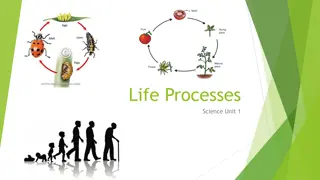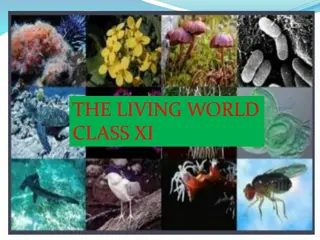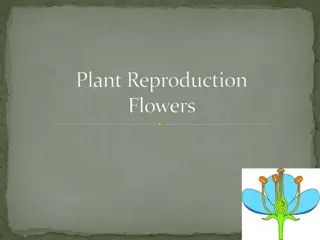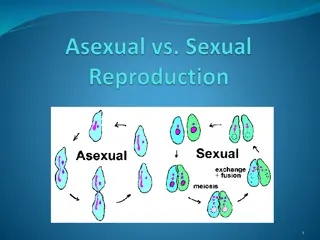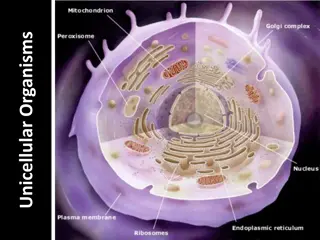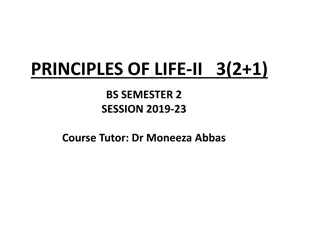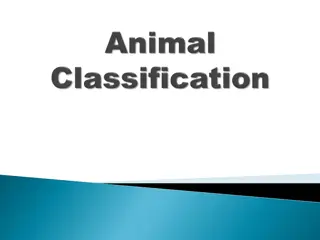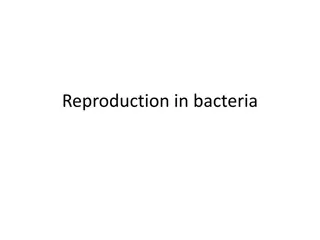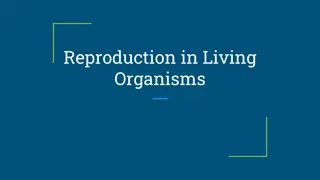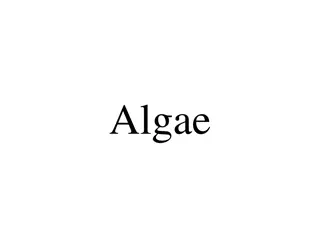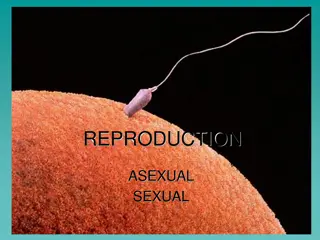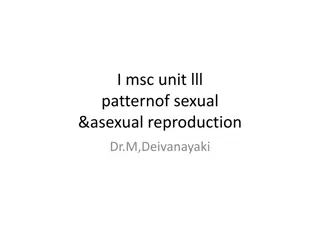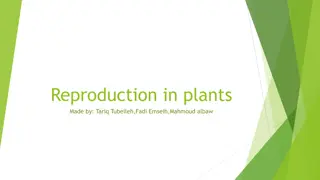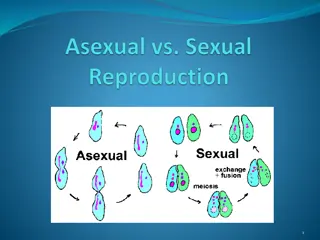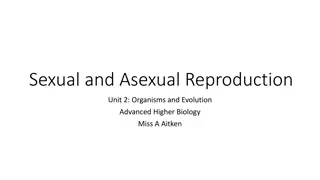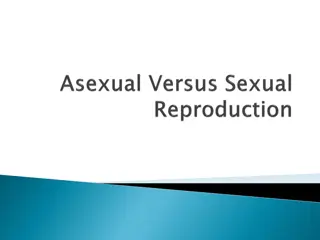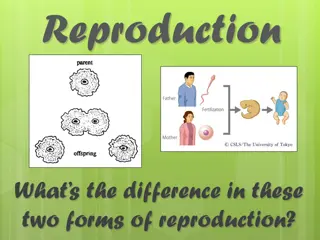Understanding Types of Reproduction in Organisms
Organisms reproduce through asexual and sexual reproduction methods. Asexual reproduction involves one parent and produces uniform offspring, like in binary fission, budding, and regeneration. Sexual reproduction involves two parents and results in offspring with varied traits. Both methods have their advantages and disadvantages, influencing how organisms adapt and reproduce in their environments.
Download Presentation

Please find below an Image/Link to download the presentation.
The content on the website is provided AS IS for your information and personal use only. It may not be sold, licensed, or shared on other websites without obtaining consent from the author. Download presentation by click this link. If you encounter any issues during the download, it is possible that the publisher has removed the file from their server.
E N D
Presentation Transcript
How many parents involved in the types of reproduction listed? parents are Sexual Reproduction Asexual Reproduction
How many parents involved in the types of reproduction listed? parents are Sexual Reproduction 2 Parents 1 Parent Asexual Reproduction
Todays Task Types of Reproduction Notes Venn Diagram Unit 11 Genetics Vocabulary Update Journal Today s Goal I can compare and contrast types of reproduction.
All organisms (plants, animals, bacteria, etc.) reproduce offspring. Parents pass on copies of their genetic material during reproduction. This is why offspring look similar to their parents, because they share traits. There are 2 types of reproduction: asexual reproduction and sexual reproduction.
Type of reproduction that Involves only 1 parent Produces uniform offspring Key vocabulary: same, identical, copy, clone Advantage: Can reproduce many & quickly Disadvantage: Cannot adapt to environment Amoeba Reproduction
Binary Fission type of asexual reproduction in which cells copy themselves, then divide into two identical organisms. Ex. Bacteria
Budding type of asexual reproduction in which an organism produces a bud that breaks away to live on its own. Ex. Hydra http://t0.gstatic.com/images?q=tbn:HE4I5Qp-2vXFIM:http://mrsdlovesscience.com/asexualrepro/budding.gif
Regeneration type of asexual reproduction in which the organism uses cell division to re- grow body parts. Ex. Starfish
Vegetative Propagation type of asexual reproduction in which part of an existing plant is cut off and grows into a new plant Ex. Strawberry, potato, ivy (shoots or vines)
Type of reproduction that Involves 2 parents Male: sperm Female: egg Produces diverse offspring Key vocabulary: different, unique, variety, genetic variation Advantage: Can adapt to environment Disadvantage: Takes longer to reproduce & not as many offspring 2 Parents Diverse offspring
1 parent 1 parent
Offspring is kind of like the parents
100% identical to parent
2 parents 2 parents
Diverse Offspring Diverse Offspring
Cannot adapt Cannot adapt
Uniform offspring Uniform offspring
Can adapt Can adapt


